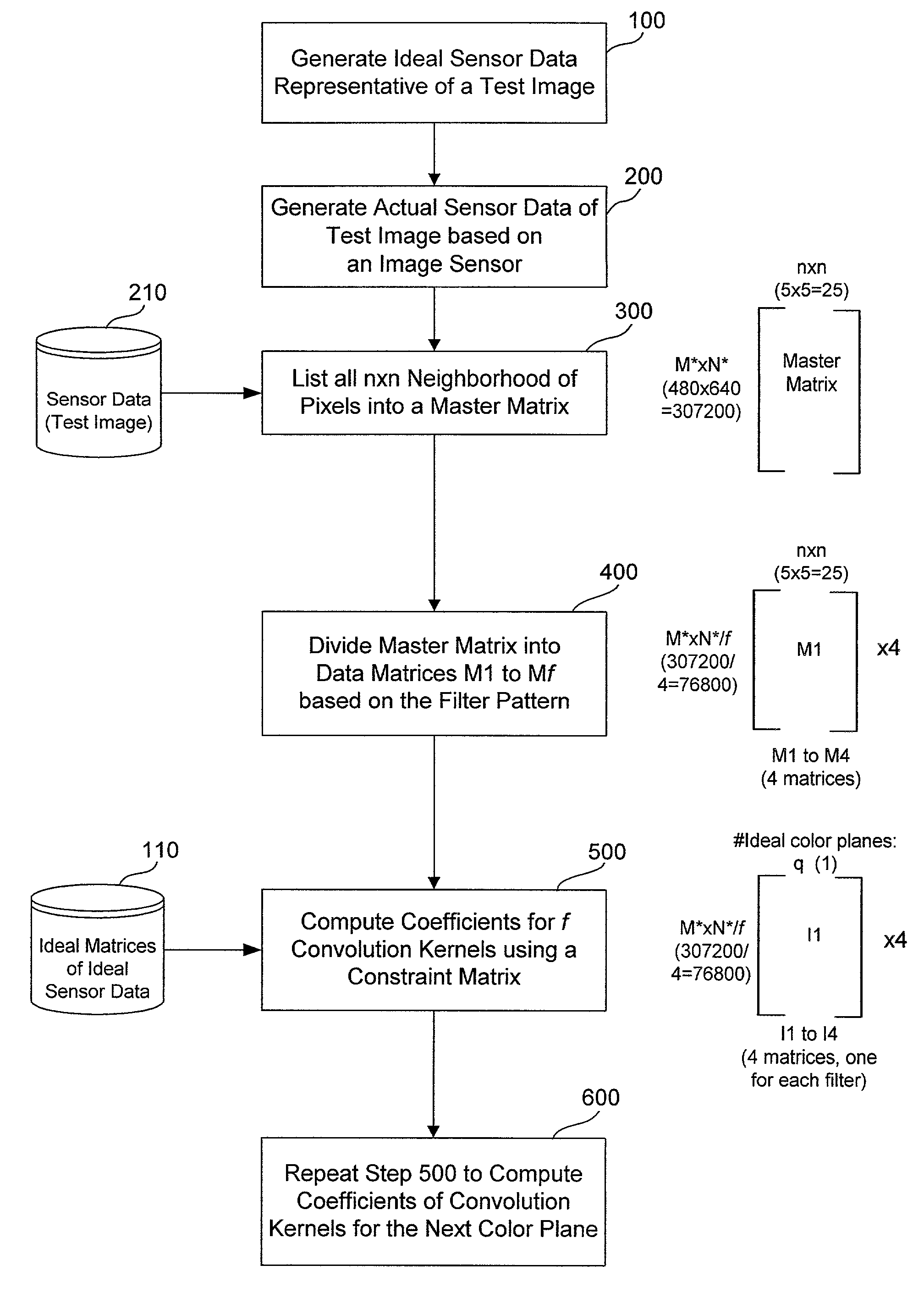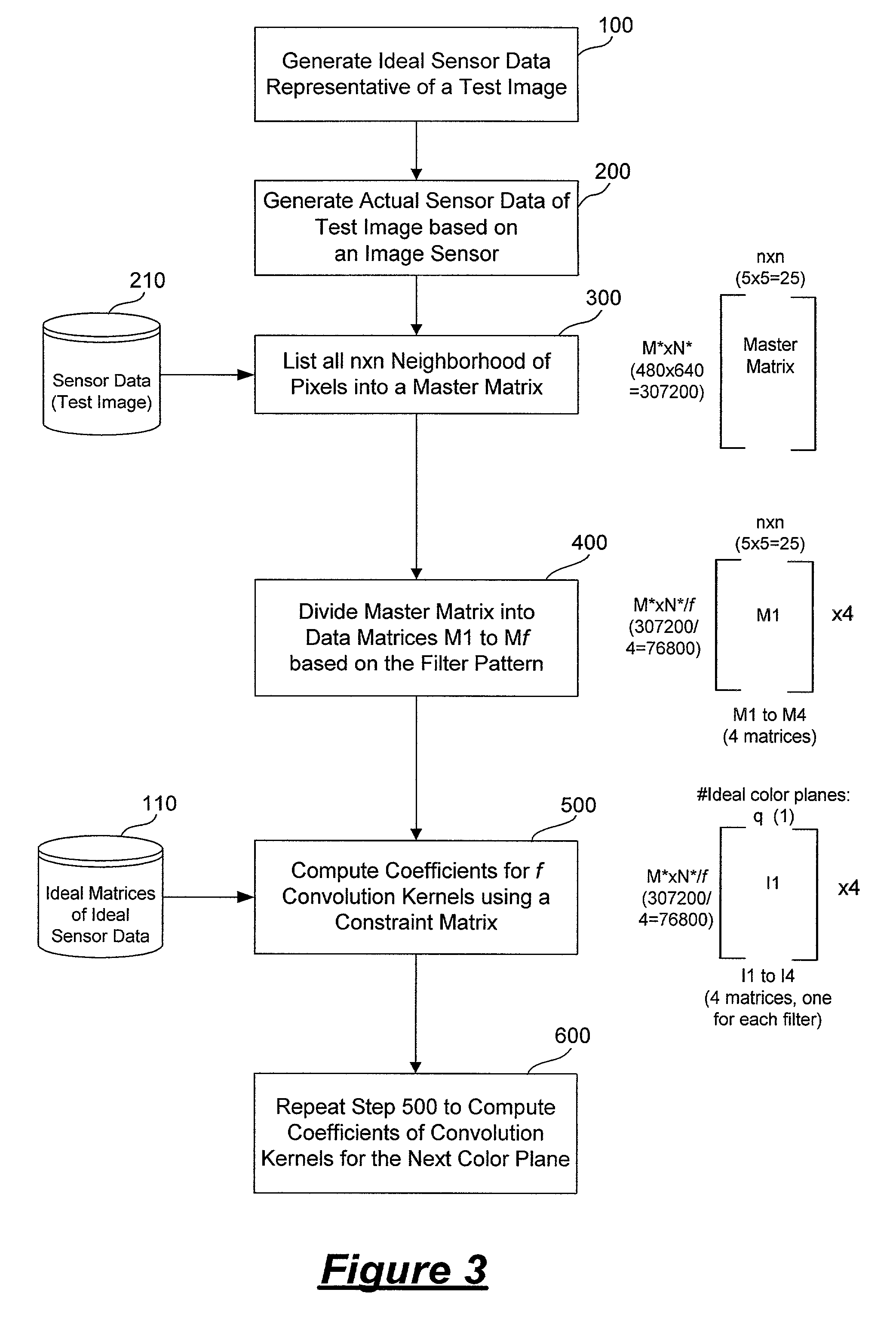Method of defining coefficients for use in interpolating pixel values
a coefficient and coefficient technology, applied in the field of image processing methods and techniques, can solve the problems of computational intensive or inconvenient methods for generating the coefficients of a convolution kernel, multiple image-sensor devices are more complex, and require precise optical design
- Summary
- Abstract
- Description
- Claims
- Application Information
AI Technical Summary
Benefits of technology
Problems solved by technology
Method used
Image
Examples
Embodiment Construction
[0029]In accordance with the principles of the present invention, a method for defining coefficients for a set of convolution kernels for use in interpolating pixel values in a color image sensor is described. The coefficients are computed using a constraint matrix specifying one or more constraints. The constraints are selected to enhance the image quality of the resultant full color image to be derived from the image data captured by the color image sensor. For example, a set of constraint conditions can be designed to improve the color uniformity and edge uniformity of the full color image. The use of a constraint matrix greatly simplifies the computation of the coefficients and allows linear least square regression to be used only for solving a small number of parameters from which the coefficients can be derived. The coefficients for a set of convolution kernels defined using the method of the present invention can be applied in image processing to generate a high quality full ...
PUM
 Login to View More
Login to View More Abstract
Description
Claims
Application Information
 Login to View More
Login to View More - R&D
- Intellectual Property
- Life Sciences
- Materials
- Tech Scout
- Unparalleled Data Quality
- Higher Quality Content
- 60% Fewer Hallucinations
Browse by: Latest US Patents, China's latest patents, Technical Efficacy Thesaurus, Application Domain, Technology Topic, Popular Technical Reports.
© 2025 PatSnap. All rights reserved.Legal|Privacy policy|Modern Slavery Act Transparency Statement|Sitemap|About US| Contact US: help@patsnap.com



